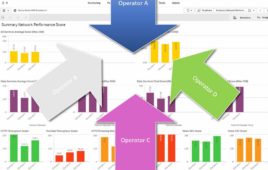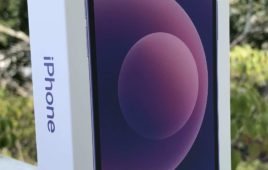Sprint put up an impressive number when it reported nearly one million connections added to its platform during its fiscal third quarter, a 42 percent increase year-over-year.
But the majority of those additions were lower-revenue prepaid and wholesale connections, with only 30,000 postpaid net adds in the mix.
Sprint lost 205,000 postpaid phones and it saw elevated postpaid churn, which was up 12 basis points sequentially to 2.3 percent.
But Sprint CEO Marcelo Claure said during Thursday’s earnings call that the losses represent an improvement over the 1.8 million postpaid phones lost in the prior three quarters.
Sprint also saw its postpaid tablet adds dropped quarterly and annually. The carrier reported 55.9 million total connections at the end of the quarter.
Wireless operating revenue stayed flat over the same quarter last year and Sprint’s net operating revenue fell two percent annually to $9 billion. Amid that consistency Sprint experienced a quarterly operating loss of $2.5 billion, way up from the $576 million loss a year ago. A majority $2.1 billion of the loss came a $1.9 billion reduction to the Sprint trade name and a $200 million reduction to the wireline network value.
Consolidated and wireless EBITDA stayed relatively flat at $1.04 billion and $1.08 billion respectively. But both Claure and Euteneuer expect that Sprint’s consolidated EBITDA could increase 5 to 7 percent in 2015.
Claure gave some credit to his carrier’s “cut your bill in half” offers for driving revenue and said that Sprint will continue those deals through 2015.
Sprint says its LTE network now covers 270 million POPs, up from 260 million in early December 2014. The carrier’s 2.5 GHz LTE deployment now covers 125 million POPs, well above the 92 million POPs Sprint CFO Joe Euteneuer said it covered in early December.
When asked about potentially selling or leasing extra spectrum, Claure acknowledged his responsibility to continue looking into the value of Sprint’s 2.5 GHz spectrum. He said the outcome of the AWS-3 auction and the potential of carrier aggregation (CA) makes the 2.5 GHz look attractive but that Sprint isn’t actively shopping the spectrum around. He declined to comment on the talks of a potential partnership with Google for an MVNO.
CTO Stephen Bye declined to disclose a timeline for when CA between 2.5 GHz and 1900 MHz spectrum would become available, but he did say Sprint is working with vendors and manufacturers toward that goal. As Claure said, that scenario would allow Sprint to use 1900 MHz for uplink and 2.5 GHz for downlink.
Claure said beyond a good network and compelling offers, a carrier needs wide distribution to grow. He reiterated Sprint’s goal to add 500 retail spaces and said the carrier continues to look into options toward meeting that mark.
Claure’s remarks come as reports indicate Sprint is possibly buying storefronts from RadioShack as the electronics retailer is in the midst of considering bankruptcy options.




